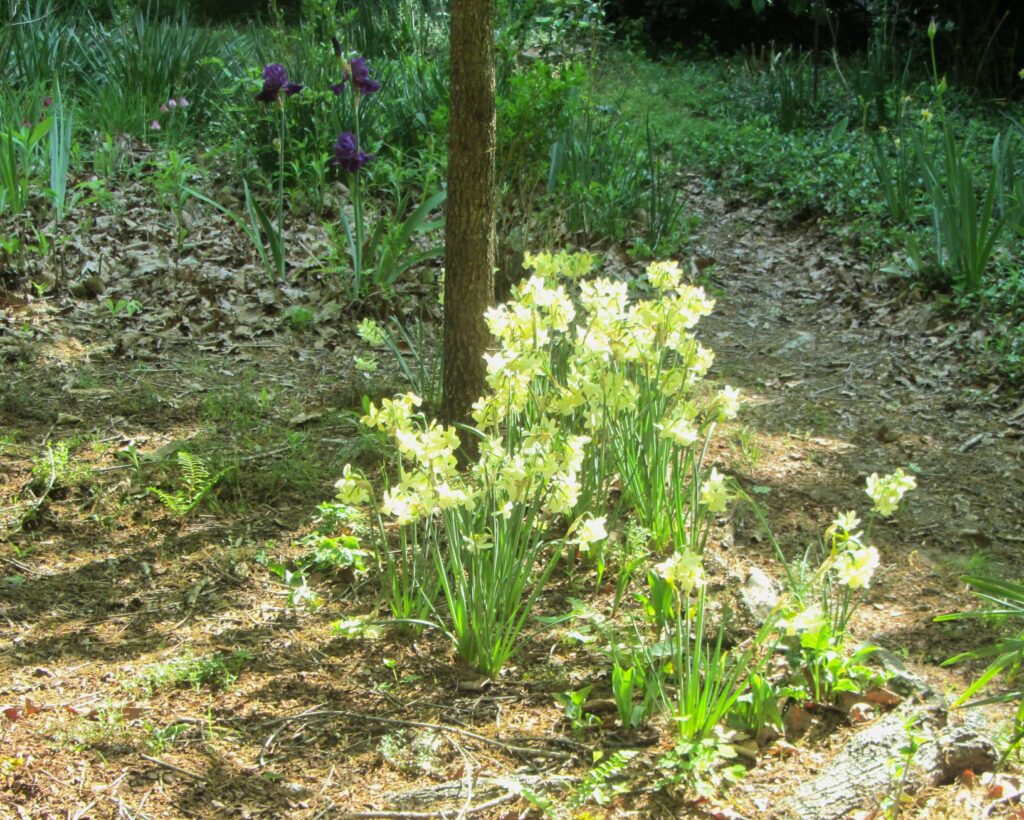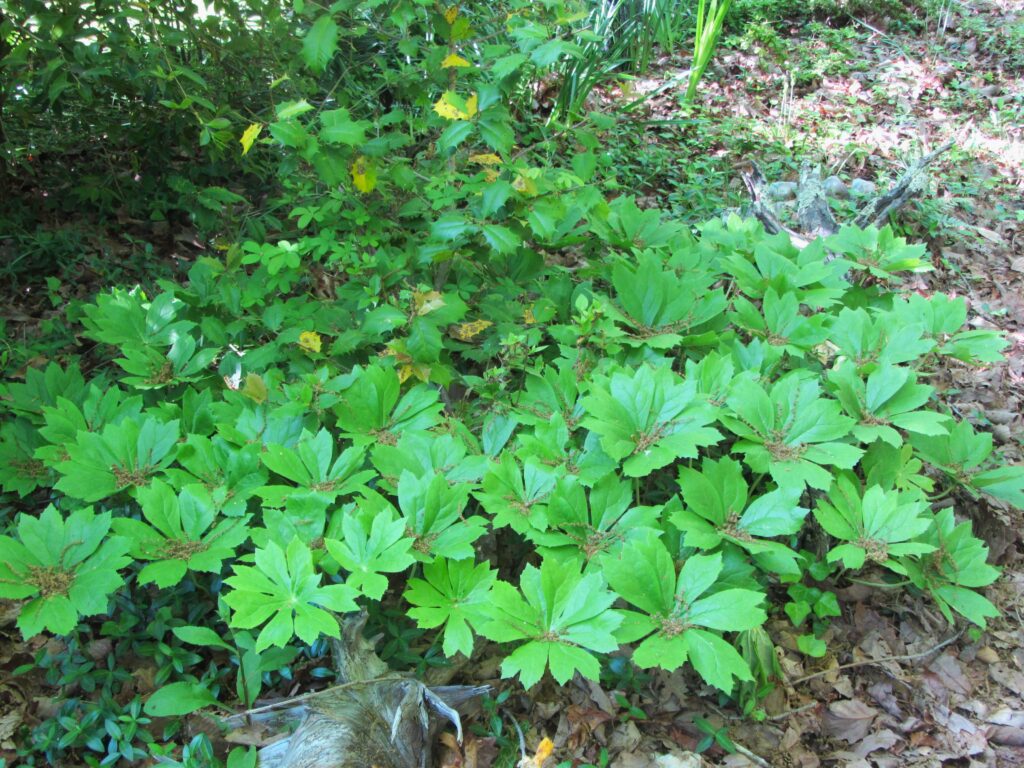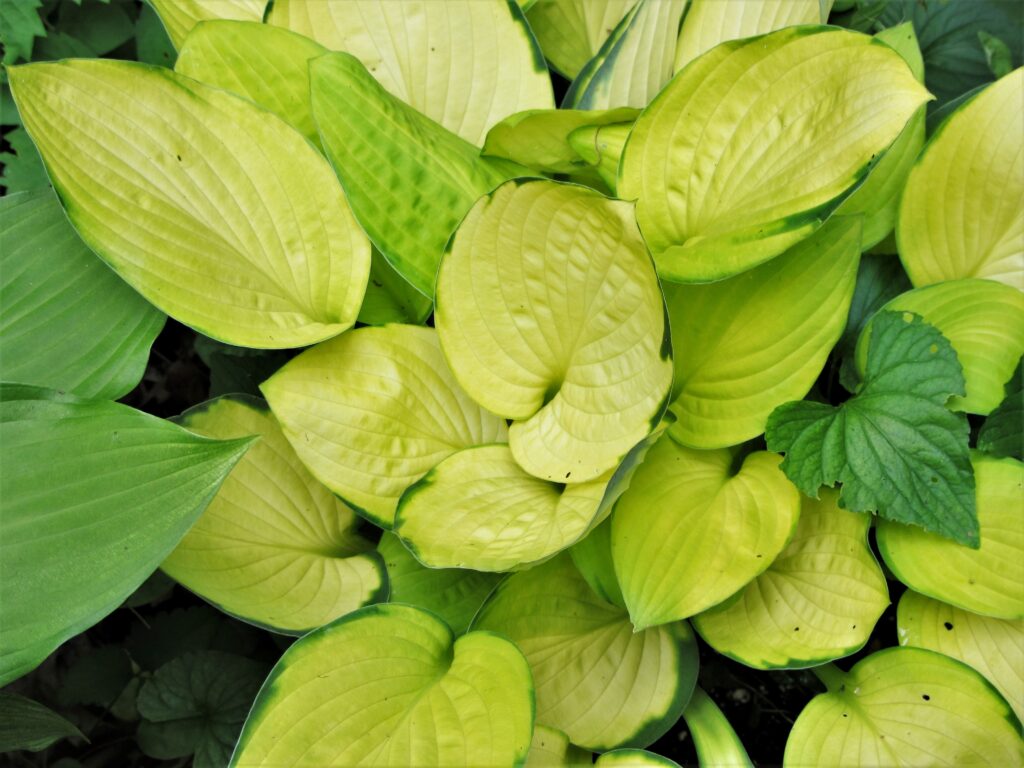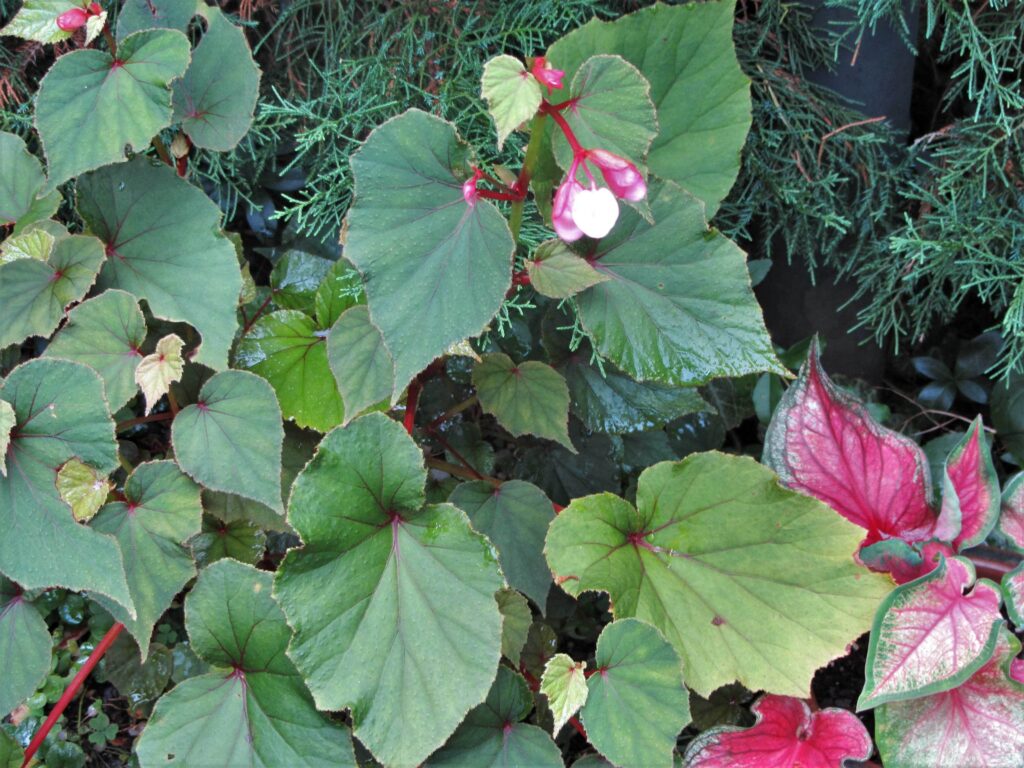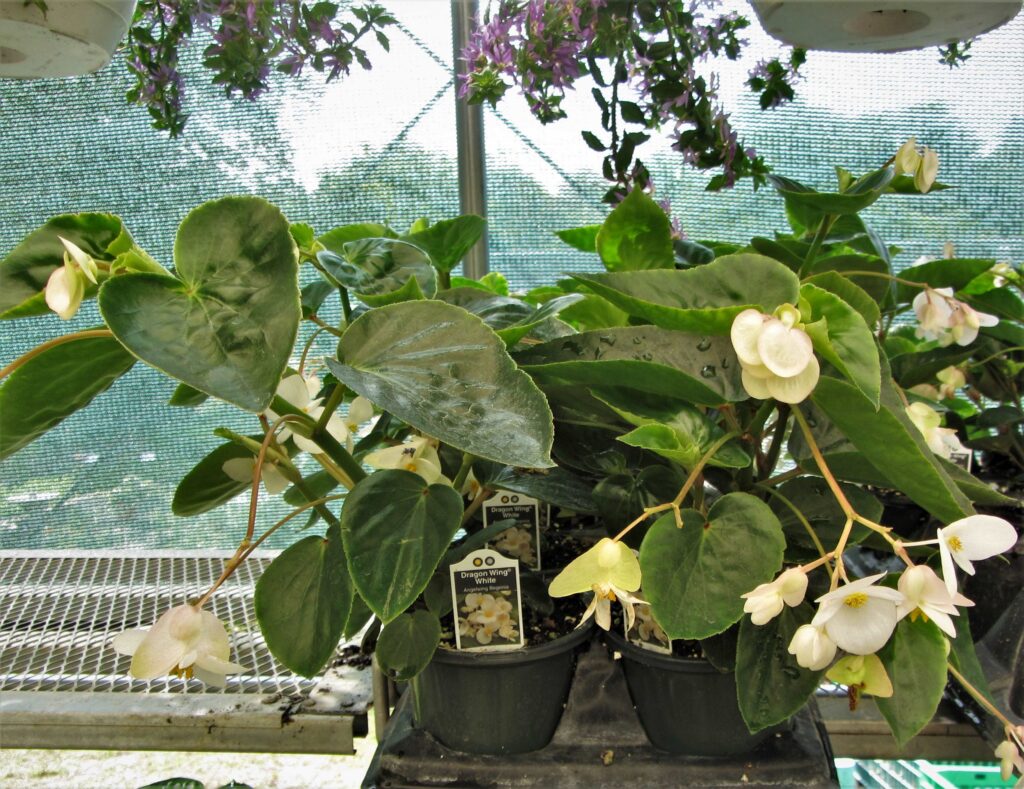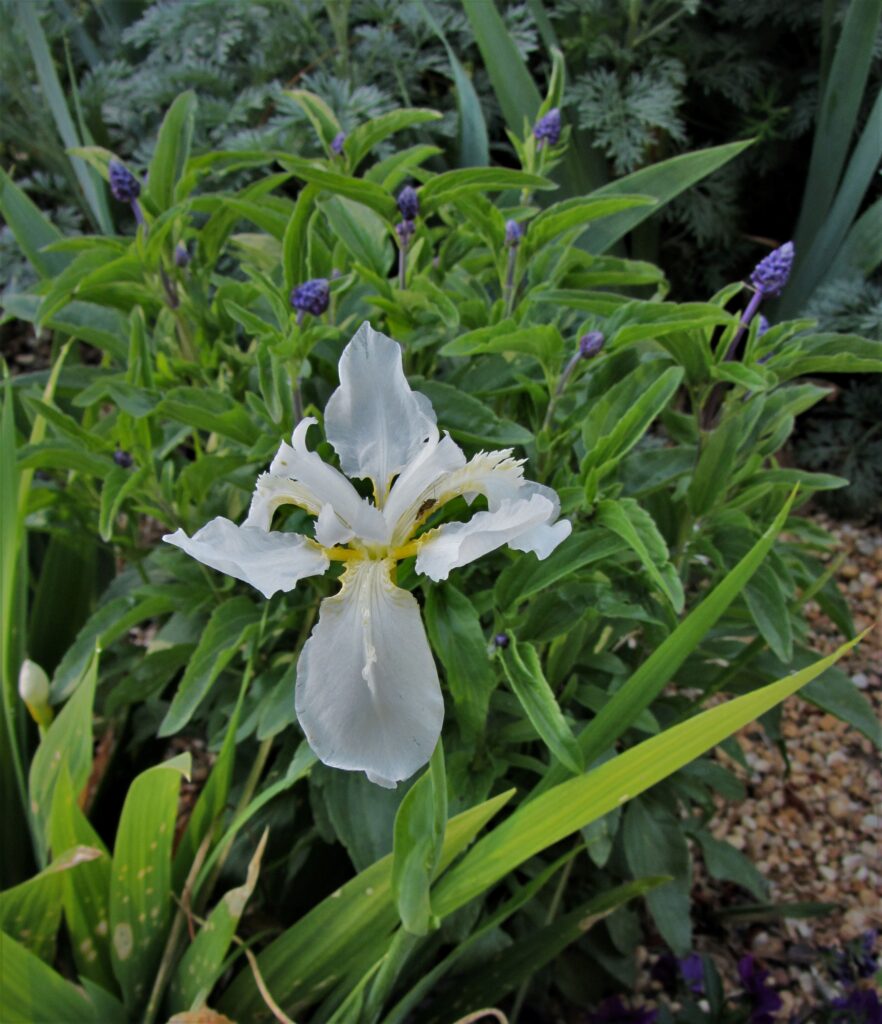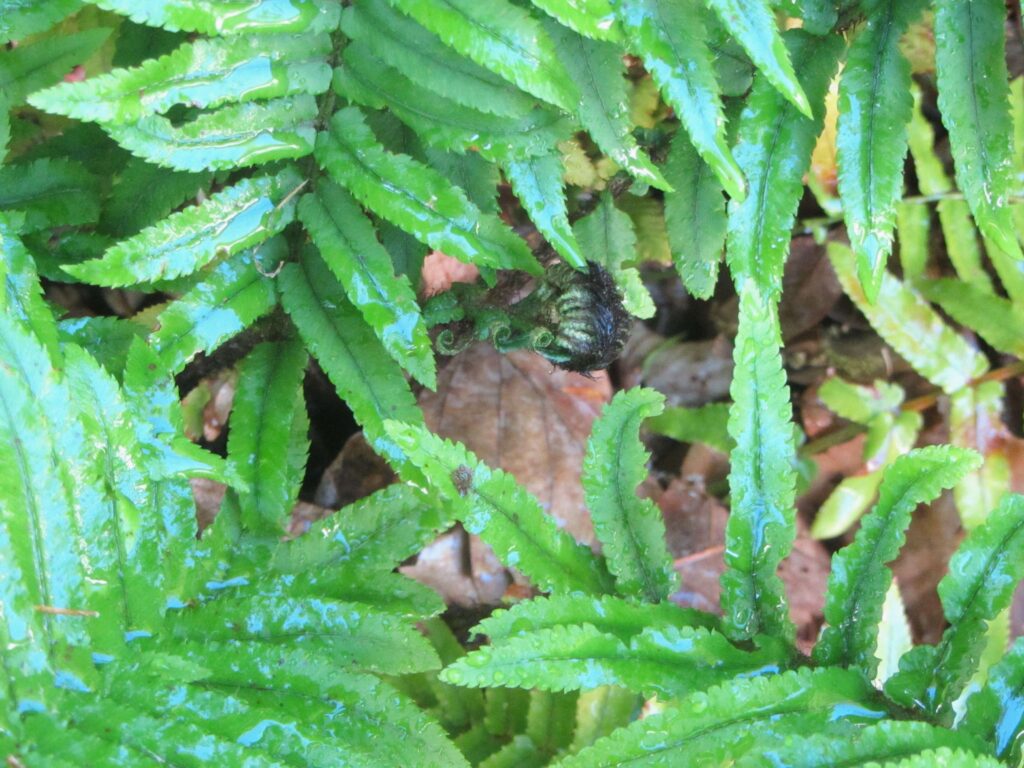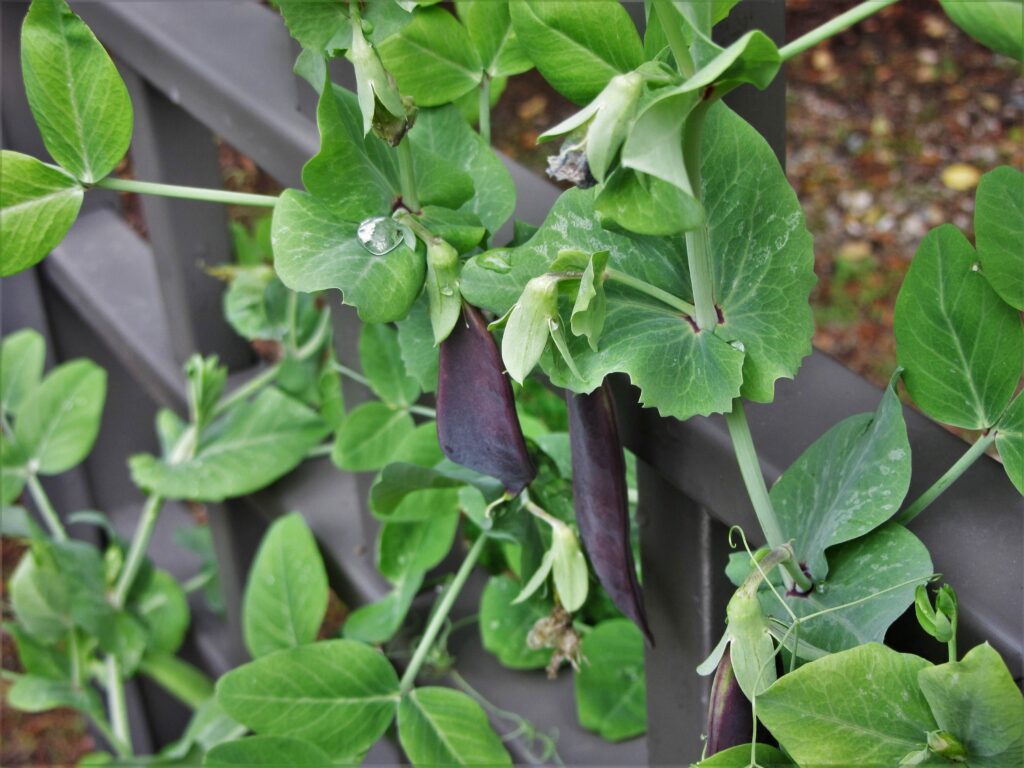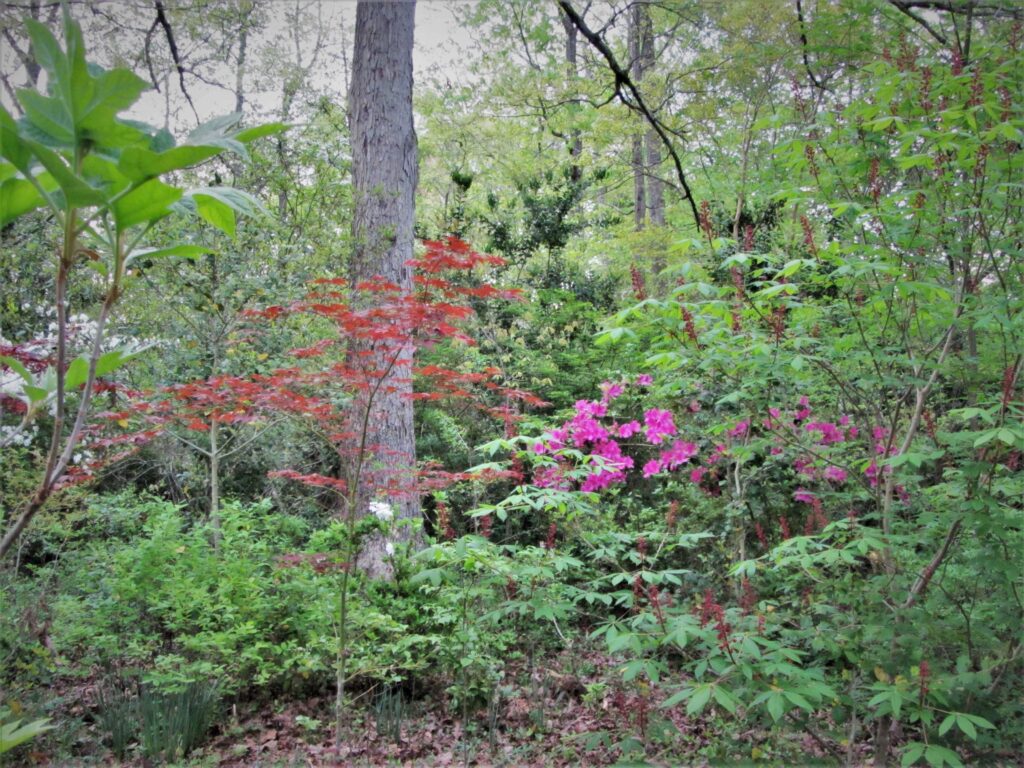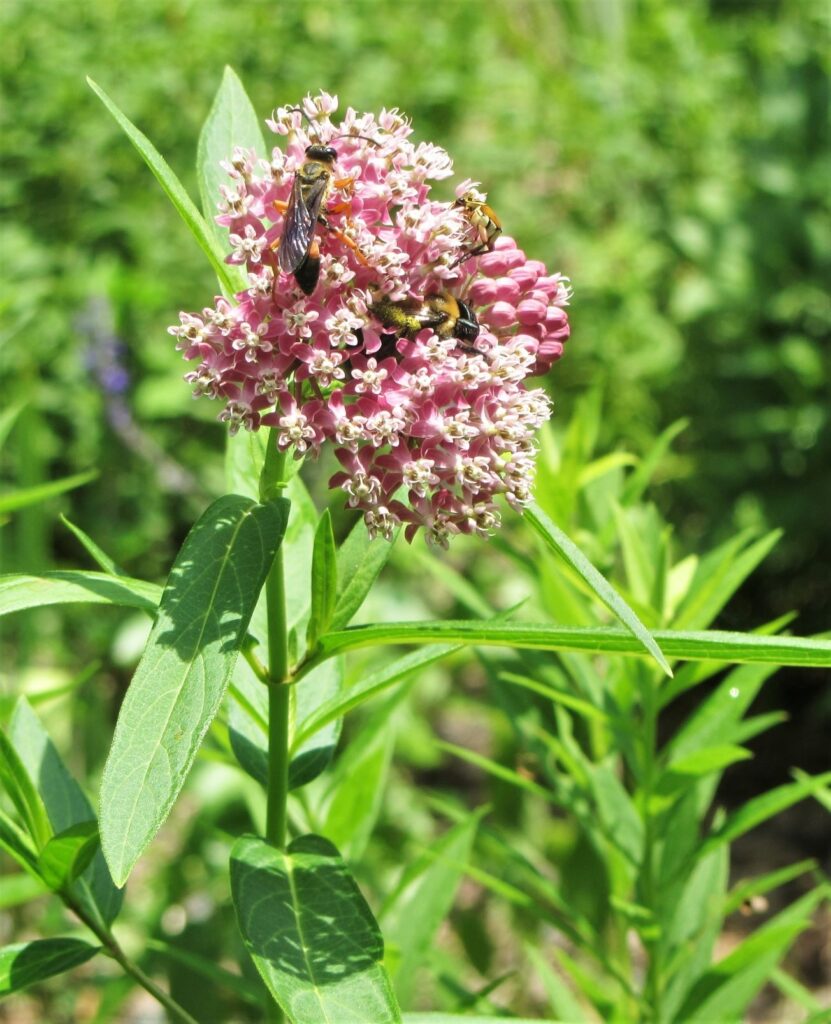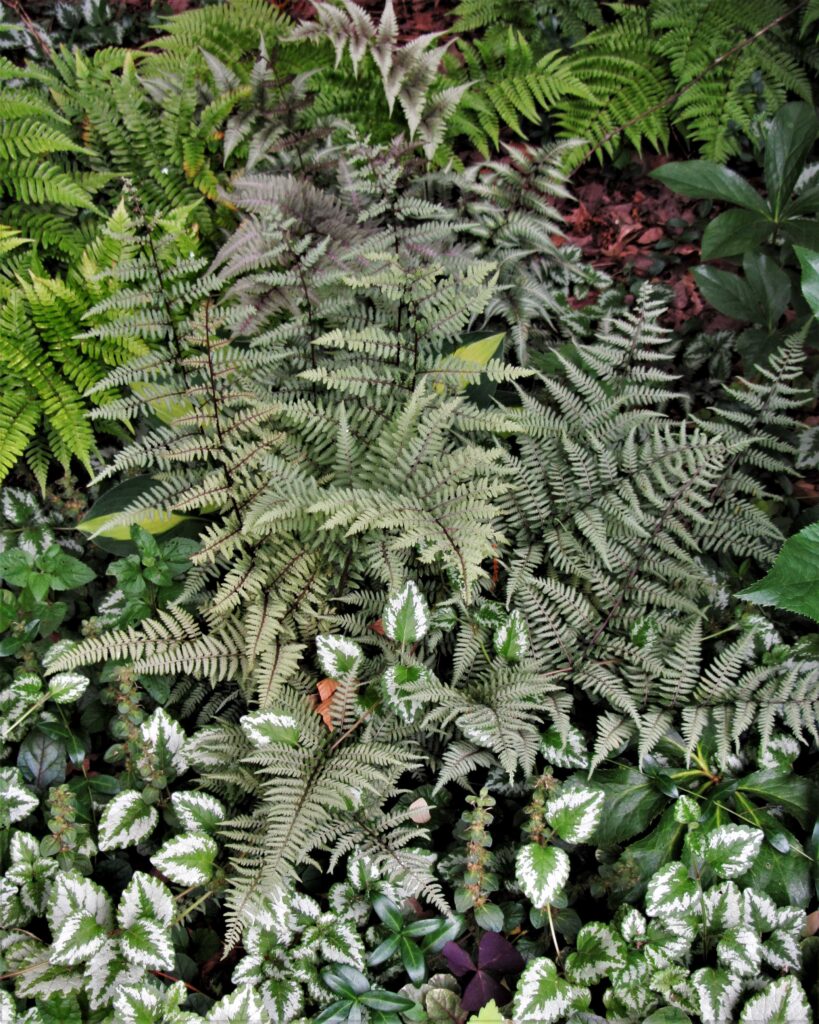Early Summer: To Do, To Do Less, and To Avoid
What To Do in May and June
Avid gardeners find lots to do during May and June as spring melts into summer. The enjoyment of spending time outside watching things grow and listening to the birds can distract us from our spring to-do list. But taking care of business early in the season will result in a more attractive garden and more success through the summer months ahead.
The days are getting noticeably longer and warmer as the first flush of spring flowers fades into memory, leaving a bit of a shriveled and faded mess behind. However romantic spring flowers may seem, there is the small matter of cleaning up as spring rushes ahead towards summer. Cleaning up goes hand in glove with planting during the very busy months of early summer.
Spring Clean-up
Winters may be growing shorter, but there is still the annual cycle of growth and decay to manage. Everything that dies back and decays has the potential to feed the soil and fuel growth in some future season. But we still must manage it on a regular basis to keep our gardens looking their best.
Pruning
Prune spring flowering trees and shrubs after they finish blooming to control their size and to open up congested shrubs to improve air flow. Shrubs like azaleas, Rhododendrons, flowering quince, Forsythia, Japanese Pieris, lilacs, and Camellias bloom from buds set the previous summer. Prune after blooming is finished to allow time for the shrub to grow and set buds for next year’s flowers.
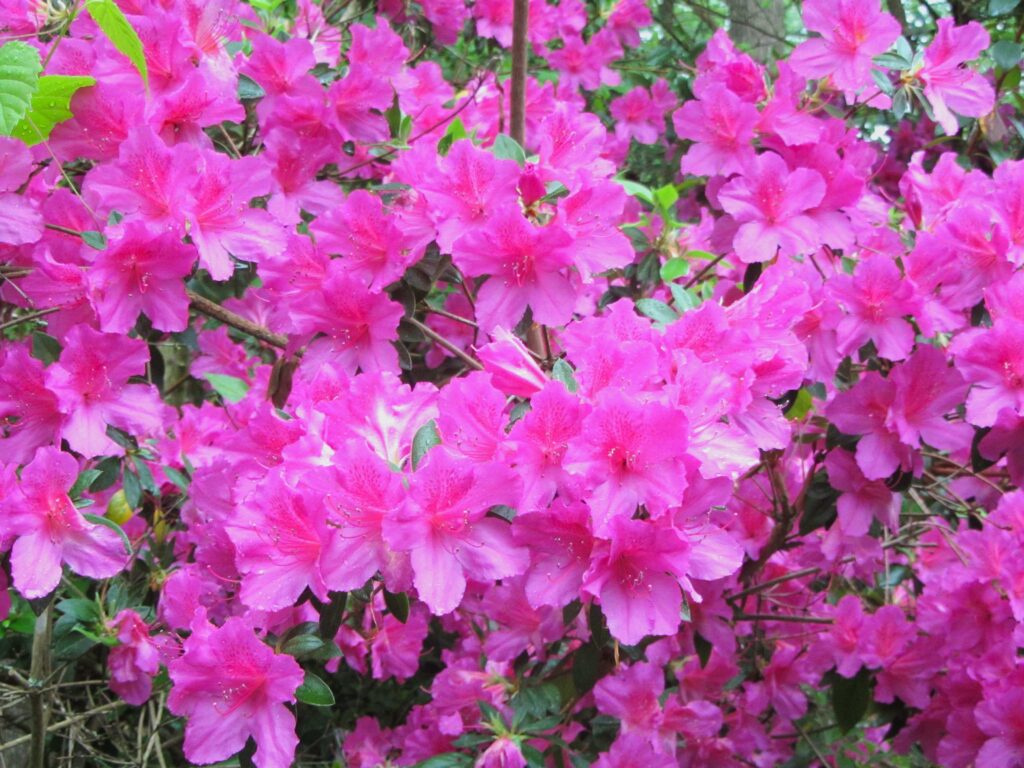
Wait to prune Azaleas, like ‘Formosa,’ until their blooms fade. Remove dead or damaged wood any time of the year.
>Roses, rose of Sharon, Hydrangeas, crape myrtles, and other summer flowering shrubs generally bloom on new growth. Finish pruning these in early to mid-spring as new growth begins, and continue to deadhead as flowers fade. Sometimes it is smart to wait to prune Hydrangeas until new growth has appeared to tell living wood from dead. Remove old and dead or dying stems as close to the ground as possible to make room for new growth.
>Remove any obviously diseased or dead wood from redbuds, dogwoods, fruit trees, and hardwood trees by late spring when no new leaves have emerged from a branch.
>Keep scissors and secateurs in your pocket when working in the yard to immediately address weeds, invasive vines, or unwanted seedlings as you spot them.
>Pinch out the growing tips of annuals, perennials and herbs to encourage side branches and produce a fuller plant.
Leaves
Rake or blow any remaining fallen leaves onto a grassy area and chop them with a mulching mower. These will naturally fertilize the lawn. Or, collect them in the mower’s bag and pour them into the compost bin or spread them as mulch under shrubs and trees where they will decompose and nourish the soil.
First Mowing
While some of us delay mowing the lawn until some time in May to allow bulbs and wildflowers to bloom in early spring, it is smart to begin the summer mowing routine by late May. Use a mulching mower so that the grass clippings remain in place to feed the soil.
Bulbs and Iris
When spring flowering bulbs and rhizomes fade, most pour energy into producing seeds. Deadheading each faded flower not only keeps the garden looking better, it allows the plant to pour its energy into bulb production instead of seed production. Unless you want a particular flower to produce seeds and spread itself around, deadhead spent blooms as they fade. Cut Iris scapes to the ground after the last flower has faded.
>Leave all green leaves and stems to continue feeding bulbs for 6-8 weeks after blooming is finished. They may look increasingly ratty, but cutting them too soon, or reducing the sunlight they can process by tying them up, will reduce the bloom for next spring. Cut bulb foliage away in June as it begins to turn yellow.
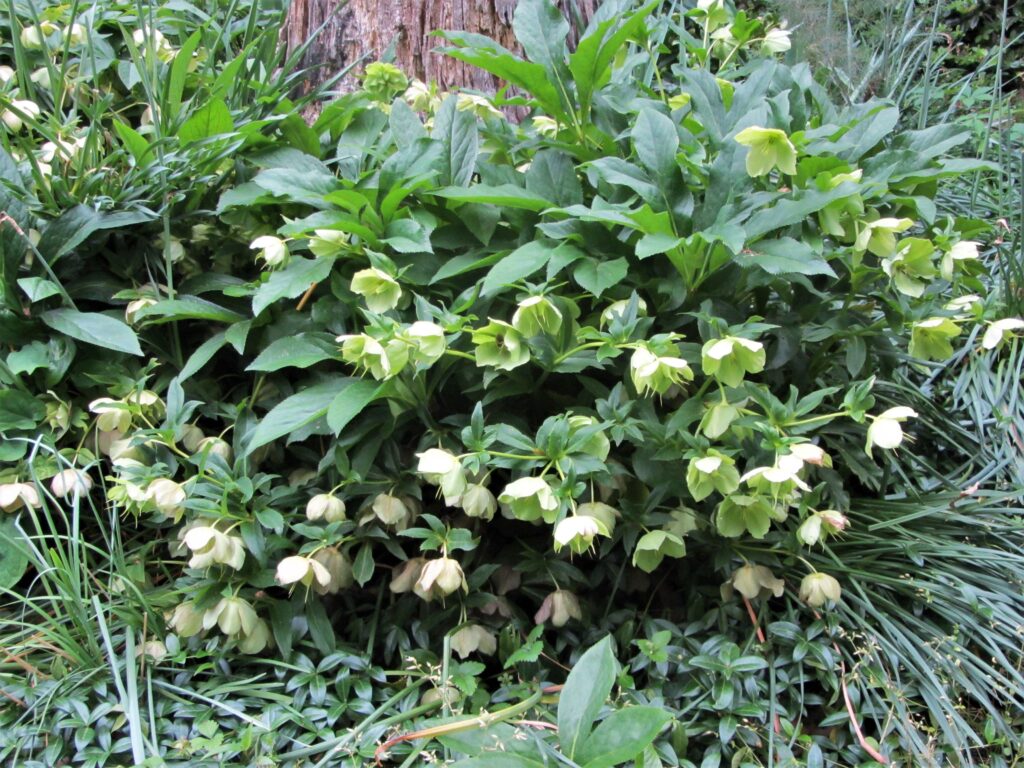
Remove tattered leaves and fading flowers from Hellebores by early May. Leave daffodil leaves until they begin to turn yellow as they are fueling their bulbs for next spring’s bloom.
Other Perennials
>Finish cutting and removing any stems and faded leaves left standing on perennials. Many gardeners leave seed heads standing to feed birds through the winter, but they should be removed by the time new growth has reached a few inches high.
>Remove old and faded leaves from evergreen perennials like Hellebores, ferns, Epimediums, etc. Remove spent flowers from Hellebores to prevent their seeds from ripening unless you need lots of baby Helleborus plants.
Tree Litter
Many trees drop flower petals, catkins, bud covers, faded leaves, and other bits in the spring. Sometimes squirrels break off clusters of new leaves. Keep this tree litter cleaned off of newly emerging plants, hardscaping, and other areas where it can accumulate. It will quickly decompose if blown under plants as mulch or gathered and added to the compost pile.
Dividing
>Divide perennials and ferns as they appear, if needed, by using a spade to chop off a portion from the side of the clump. Every division should have some leaves, a portion of the crown or rhizome, and some roots. Digging the entire clump and then cutting it apart is another method but is more disruptive to the entire plant. Wait to divide peonies and Iris until after they finish blooming.
>Clumps of bulbs may also be dug after they bloom, and while their leaves are growing, to divide and replant them. Keep in mind that the bulbs may have gone deeper than they were originally planted. Some bulbs can pull themselves deeper over time and you will need to dig well away from the clump, and deeper than you may expect, to remove the bulbs and their roots without slicing them. Dividing up congested clumps of bulbs every few years helps them to bloom better and allows you to spread favorite varieties into new areas.
>Perennial seedlings near the mother plant, and baby fern sporelings, may also be dug up and moved in May and early June. After dividing or moving plants, feed them some compost, water them in well, and give them some mulch to help their roots settle and begin to regrow.
Potting
>Pot up any rooted cuttings and started seeds you have nurtured indoors for the past several months. Prepare them to live independently outside by letting them acclimate in the shade for a few days before planting them in their summer spots on an overcast or rainy day.
>Re-pot perennials and woody containerized plants if they appear root bound. Look for roots growing out of drainage holes. Remove plants from their pot to inspect their roots when a plant has been in the same pot for more than a year. Look for encircling roots filling the pot as a sign it is time to move up in the world. Choose a pot 2″-4″ larger than the current pot. Use fresh potting mix. Loosen roots on the outside of the root ball if needed before re-potting the plant, and water well.
Planning, Shopping and Planting
>Planting colorful new plants, refreshing containers, and trying new planting schemes in our beds gets our creativity flowing in spring. But it is easy to get overwhelmed and buy too much or too little. Plan ahead with a good idea of exactly what you need and what you want.
>Prices for plants, bulbs, seeds, and all the materials we need to garden continue to noticeably rise each year. Planning ahead lets of take advantage of deals and reduce the number of trips to the nursery. Budget friendly deals on smaller plants early in the season can save us several dollars per plant over prices for larger plants, of the same type, later on. Those tiny plants bulk up quickly once planted. Herbs, annuals, perennials, and vegetables in 4 packs and 6 packs are great opportunities to save money.
>Starting plants from seeds in late winter or early spring is more economical than buying plugs. A wider variety of plants is often available from seed catalogs than as growing plants from local nurseries.
>Ordering Caladium tubers and bare perennial roots or plugs is more economical than buying plants already in growth in larger pots. Gardening dollars go farther, but we also buy more plants of the same type for a more cohesive look. A dozen Caladiums of the same variety in a grouping usually look better than one or two of several different types grouped together. Buying bare root in bulk reduces plastic waste as we bring fewer pots home from the garden center.
>The season for buying fresh plants in the spring is fairly short, with stocks reduced by mid-June. Plants can disappear at local garden centers as quickly as they appear. Buying early ensures the greatest selection. Know in advance what plants you are looking for and how many you need. Keep a list and include supplies like potting soil, soil conditioner, mulch, fertilizer, animal repellents, and any new containers so you can purchase things as you find them.
>Many favorite summer plants hate the cold. Although the last frost usually occurs by late March, there are still cold and windy days and nights through late April. The weather settles enough by early May, in our area, to plant out heat-loving vegetables like tomatoes, eggplant, basil, sweet potatoes, and peppers and heat loving ornamental plants like Begonias, ginger, Colocasia and Caladiums. Planting these heat lovers too early can stunt their growth for the season.
>Each new planting should be mulched and watered immediately. Consider shaking a bit of balanced fertilizer into each planting hole as you dig it or add a balanced liquid fertilizer to that first watering.
>If deer, rabbits, or squirrels disturb plants in your yard, then treat each plant with repellents as you put them outside.
>Decide now whether you want to plant more spring flowering bulbs, where they are needed and what types and colors to order while it is all fresh in your mind. It is easier to see clearly where any new bulbs will be planted in the fall while you can still see the leaves of this year’s display. Some bulb specialists, like Brent and Becky’s Bulbs in Gloucester, VA, offer discounts for orders placed by the end of June. B
Labeling and Keeping Notes
Labeling or mapping perennials, bulbs, trees and shrubs, and even annuals keeps us organized and helps us remember what is where, even when plants are dormant. It is interesting to watch how our gardens evolve over the years from these simple records. Keeping track of the names of cultivars we choose is helpful when we want to add more in years to come. It is even more helpful to find the label and realize that the plant didn’t make it. We can learn from these mistakes by trying a different plant in that spot, or by improving our care for a favorite plant that didn’t survive.
>Use a file folder or photo album to organize plant tags and a notebook for daily planting notes and lists. Make a copy of your property survey map or a landscaper’s rendering to note permanent plantings like trees and shrubs.
>If you haven’t been keeping notes over the years, use photos to document each part of your garden. Sometimes photos help us remember better than cryptic notes in a notebook, anyway. Keeping garden photos organized by month and year allows us to watch plantings develop from one year to the next.
Watering
Summer heat begins to build by late April, sucking moisture from the soil and from containers. Consider setting up a drip irrigation system for vegetable gardens, and soaker hoses in perennial and shrub beds. Delivering moisture at soil level saves water and time.
If an irrigation system isn’t practical, develop a routine for watering early in the morning, before the heat of the day sets in, until plants are established. Newly planted plugs and transplants need more frequent watering than they will need in another month or two, once they have grown in. New trees and shrubs need irrigation through their first year, and during drought after that.
Neglecting regular irrigation can ruin our gardening investment as plants fail to thrive or die. Keep in mind that wildlife like rabbits, deer, squirrels, and birds may seek moisture from our garden plants during drought. Consider adding water sources for wildlife to discourage them from eating your new annuals and perennials for their moisture.
Moving Back Outside
It is finally safe to move tender perennials back outdoors. Any plants that came inside for the winter can be watered, fed, and slowly moved back to their summer spots. Give the plants a few days to acclimate to sunlight again by keeping them in the shade. Move them outside when it is cloudy, or when rain is expected if they need to go to their permanent spots right away. Remember to groom the plants, give them some time release fertilizer, renew their mulch, and replace any plants that didn’t survive the winter.
Harvesting
Remember to harvest, use, and enjoy your produce, herbs and flowers. Harvesting encourages new growth and keeps plants productive. Think of harvesting, particularly flowers and herbs, as a sort of pruning to keep plants in active growth.
>Bring herbs and flowers inside to enjoy in arrangements.
>Keep beans, peas, tomatoes and squash picked to extend the harvest over a longer season.
>Have a plan for the next crop to fill each space as early vegetables and leafy greens finish their season. Succession planting keeps vegetable beds productive from early spring through late winter.
Taking Care of Yourself
>Dress for success, and safety! Ticks, spiders and insects are out there looking for their next meal, so choose a gardening outfit that protects your skin from bites and sunburn. Remember a hat and gloves for further protection.
>Bring water outside to sip as you work to prevent dehydration, particularly as temperatures warm. Dehydration and heat exhaustion can come on very suddenly while we are busy working outside. Take breaks, keep drinking water, and seek the shade.
>Stretch, lift carefully, and don’t overdo it. We are all used to the normal aches and pains from hard work, but we have to work carefully and avoid injuries whenever possible.
Enjoying
Take time to enjoy your garden. Just sitting and staring is an important garden task because we see more when we take a moment to just be still. Watch for new growth and new animals species to appear. Our appreciation for the web of life our garden holds deepens as we notice the small and quiet animals sharing the space with us. We see the subtle comings and goings of the seasons. Taking even ten minutes a day for a quiet walk or to sit quietly outside allows us to enjoy the results of our efforts.
To Do Less
Fertilizing
Take a soil sample and have it analyzed by the Virginia Tech Extension labs to determine what soil amendments are actually needed before pouring on the fertilizer for lawns and vegetable gardens. Extra fertilizers will wash away into local waterways, potentially clogging them with algae and other growth. Fertilizer remains expensive, so it makes good economic sense to use only what is needed. Time release fertilizer for container plants will last for several months.
It may be that an inch or two of compost is all that is needed to keep shrubs, perennials and vegetable gardens productive.
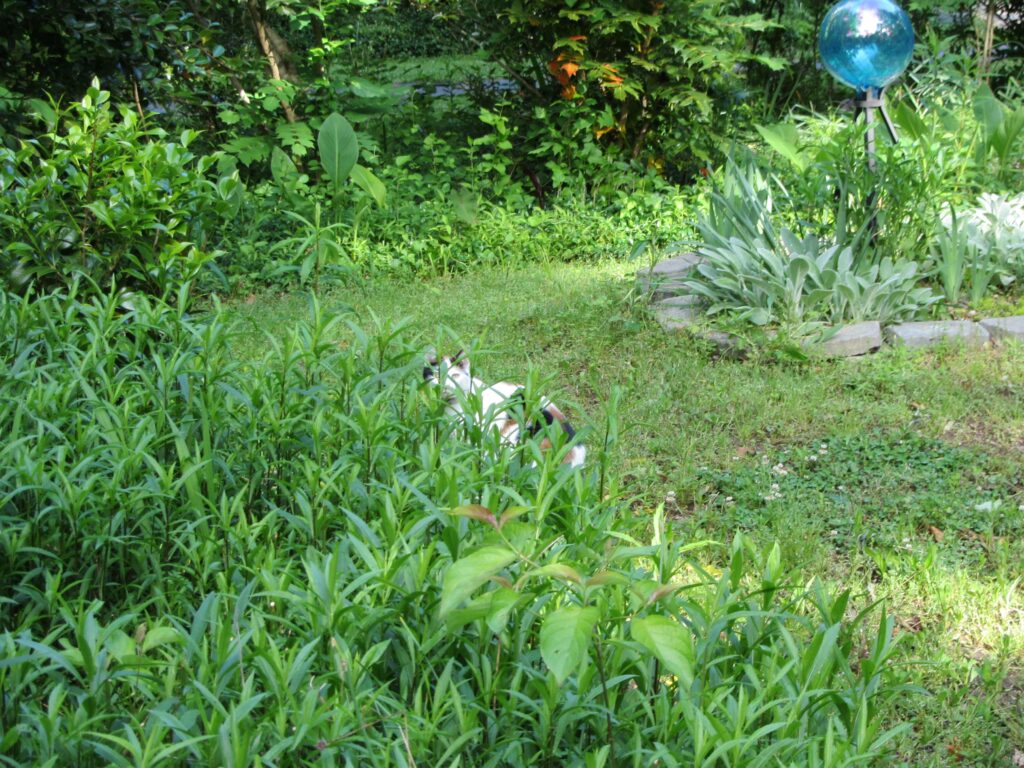
Reduce the amount of lawn that needs mowing by planting areas of perennials and shrubs, and by cultivating moss in the shade.
Mowing
Mowing the lawn is a part of the summer routine. Many families now hire lawn care companies to come in with multiple commercial sized mowers and blowers making a huge racket endured by neighbors for blocks around the work site. Most of that equipment is gas powered, which means the fumes waft down the street to other yards and homes. If we stop to consider the air pollution involved from a single lawn care visit, it is considerable.
Battery powered mowers, blowers, string trimmers, and hedge clippers are much quieter and don’t fill the air with fumes. Doing these tasks ourselves, when possible, is more economical and saves the trip with the big pick-up truck and trailer, hauling all the equipment. We save ourselves and our neighbors from breathing all those fumes and pollutants, too.
Reducing lawn area by creating beds for shrubs and perennials, ground covers, and other plantings saves time, energy, and reduces the pollution our garden generates. Going longer between regular mowings has the same benefits and is gentler on the wildlife living in our yards.

Generate at least some of your own plants from divisions and by starting your own plants from spores and seeds.
Planting
Planting new nursery plants each season uses more resources and generates more waste than we may realize. It takes a lot of water to produce a market ready plant. It also takes a lot of water to keep that plant alive and thriving. If you have stacks of empty plastic pots lurking somewhere, or if you spend a lot of time watering the garden during the summer, it may be time to reconsider the garden center habit and cut back on spring planting.
Consider planting more drought tolerant perennials that don’t need as much supplemental irrigation and that naturally increase year to year. Also try trading plants with neighbors and doing a bit of propagation of favorite plants already in your garden.
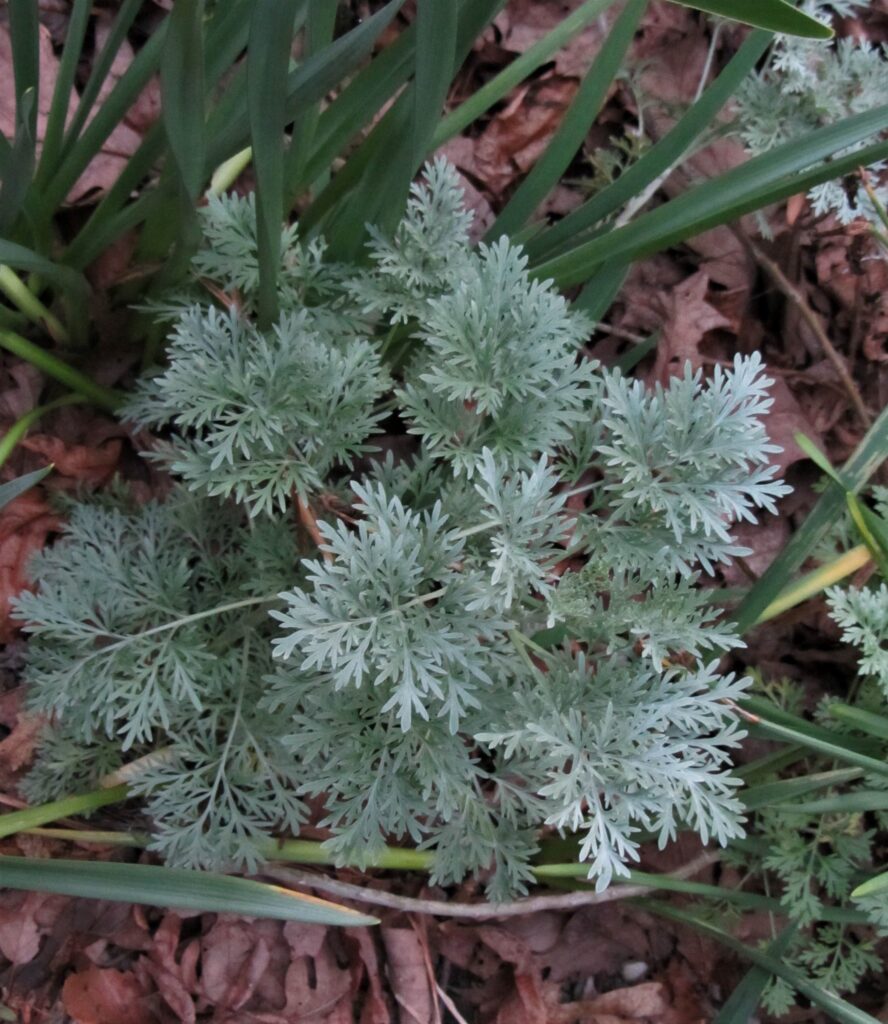
Plants like Artemesia, and other fragrant herbs, may be naturally drought tolerant and will also repel pests because of their essential oils. They are easy to grow with little added care. Plants with silver foliage are often drought tolerant.
Watering
Much of the world is already experiencing water shortages, and the price of municipal water continues to rise. Look at ways to save and use this precious resource more wisely. Consider collecting rain water in rain barrels or rain gardens. Experiment with different types of mulch to see what works best in your yard. Use soaker hoses or buried reservoirs whenever possible to avoid overhead spraying. Use drought tolerant garden design techniques to reduce water use.
To Avoid
Pesticides
Pesticides include herbicides, insecticides, and fungicides. All impact more organisms that they were designed to kill, and many impact human health, as well. If we accept that insects are important in the food web of our yard, then insecticides reduce the number of insects available for birds and small animals like frogs, lizards and turtles that depend on them. Insecticides intended for an insect pest may also kills native bees needed for pollination, and already endangered butterflies or dragonflies.
Pesticide residue remains in the soil, and all too often washes into waterways and ground water. We breathe it. It gets onto our skin and affects our own biology in ways that may not be apparent for years to come.
More and more gardeners are making the commitment to stop using herbicides and insecticides and instead foster a sustainable ecosystem within their yard. Allowing insects to thrive attracts those creatures that will eat them. Manually removing unwanted vegetation allows us to improve our soil with home-made compost instead of poisoning the soil, and the life in the soil, with harsh chemicals.
>Remove insect pests like caterpillars or Japanese beetles by hand if needed. Use non-chemical traps for pests.
>Take the James River Association’s River Hero Pledge to protect the James River from your own yard, and register your yard as a certified wildlife habitat with the National Wildlife Federation to share your commitment to a healthy and sustainable ecosystem.
Leaving Exposed, Bare Soil
Exposed soil remains vulnerable to erosion. Stored carbon can also re-enter the atmosphere from exposed soil, and it is more likely to support weeds. Make a plan to cover any exposed soil in your yard with mulches, grass, moss, or ground cover plants. Even pine tags or chopped leaves will protect the life in your soil and stop erosion.
>Apply wood chip, bark, leaf, pine tag, pea gravel, or straw mulch on vegetable gardens, flower beds, and around woody plants. Landscaping fabric may be appropriate in some situations.
>Encourage moss to grow on exposed soil in shady areas. Moss protects the soil, sequesters carbon, prevents erosion, and looks cool and inviting.
>Plant densely and encourage ground cover plants so soil remains covered with living perennials. Evergreen ground cover perennials keep cleaning the air and protecting the soil throughout the year.
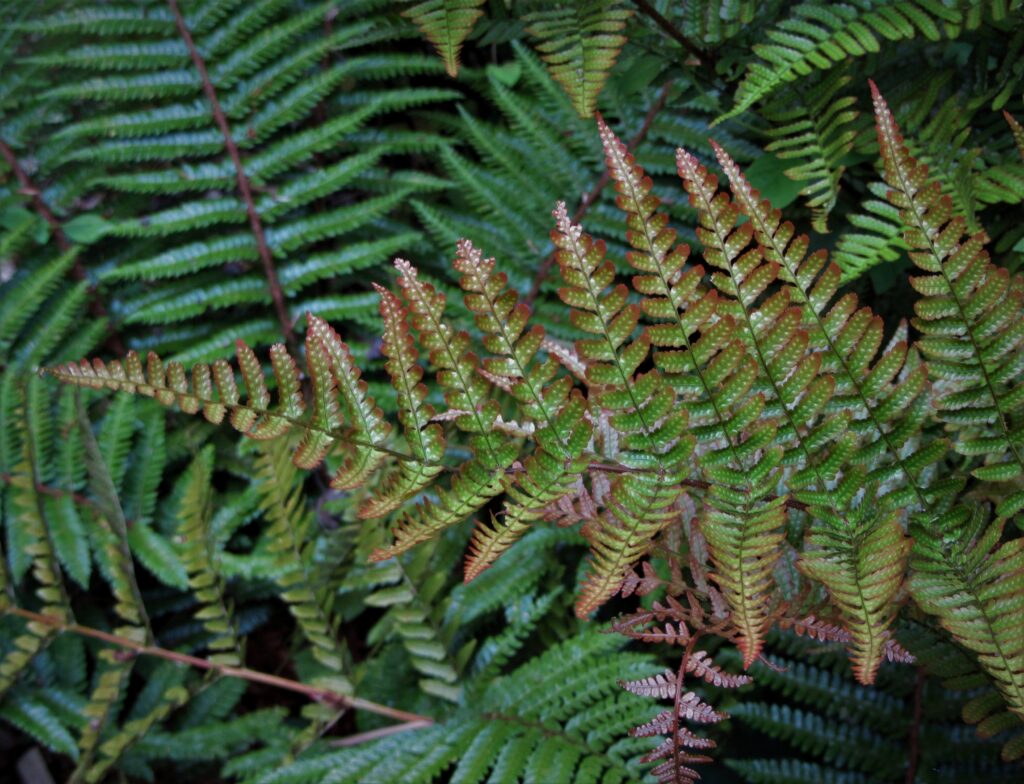
Many types of ferns, like this Dryopteris erythrosora ‘Brilliance’ are surprisingly drought tolerant once established. Evergreen ferns remain attractive year-round and make an excellent ground cover in our area.
Summary
Good gardening is both an art and a science. We are always experimenting and finding better ways to accomplish our goals. Every gardener and every garden has their own opportunities and their own challenges. And what works in one year may not work as well as time goes by. Our gardens change, and so do we.
In this age of climate chaos, we need to contemplate systems rather than tasks. We need to make the most of the resources we have and consider every aspect of our own impact on the ecosystems we care for. A little thought and creativity will show us the opportunities within our challenges. As we work with nature, rather than against the natural processes occuring in our gardens, we participate in the unfolding of a beautiful and balanced ecosystem around our home.
All Photos by E. L. McCoy




